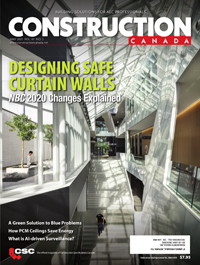The three Ps for specifying work at contaminated sites

Parameters
Parameters is the second “P” for specifying work at contaminated sites. Knowing the project’s regulatory parameters is essential to allow for the preparation of complete, concise, and co-ordinated bidding documents. If performing a project in jurisdictions where there are applicable local regulations, bylaws, guidelines or policies, the project must comply with these regulations and clearly convey their requirements in the bid documents. Sometimes the owner will be a large enough entity to warrant its own set of local regulations that will apply to their project only, for instance, mining reclamation projects involving the process of restoring land to its original condition (prior to beginning mining activities) typically consist of water treatment for settling ponds, backfilling open pits, removal of tailing piles, and so forth. These reclamation projects are often susceptible to the mining company’s policies and procedures, making it easy for the contractor to identify what can and cannot be performed at the site. Reclamation parameters may also be provided by a local work order—often referred to as an enforcement or consent order—which will outline the timelines a project must abide by, with penalties that can be incurred for failure to comply.
Many remediation projects require the importing clean soils for backfill, and the qualification of the source of the imported fill must also be specified. The specifier must specify imported fill material which is obtained from a provincially acceptable or Ministry of Natural Resources and Forestry (MNRF) licensed facility; or require submission of environmental reports to ensure the imported materials meet MECP soil, groundwater, and sediment standards in accordance with province-specific regulations such as O. Reg. 153/04, Record of Site Conditions, and/or O. Reg. 406/19, On-Site and Excess Soil Management and Ontario’s Rules for Soil Management and Excess Soil Quality Standards, 2020. Specification of specific regulatory compliance requirements in accordance with these regulations is critical for proper soil management such as source quality control (QC) and soil handling. The specifications must state the remedial design does not allow for “contaminated” soil to be introduced to a newly “clean” site in the project.
| APPENDIX A: Remediation-related plans |
| Examples of plans to be outlined in the contract documents provided to the contractor for submission prior to mobilization can include: • Temporary traffic control plan to describe vehicle or pedestrian traffic, including temporary traffic signals, sequences of construction affecting the use of roadways, temporary access roads, road mats, provisions for decking over excavation, and phasing of operations to provide safe passages for pedestrians and vehicles if required. Further details can be found in the Ontario Traffic Manuals for Temporary Conditions. •Development, implementation, and maintenance of the contractor’s site-specific health and safety plan (HASP) detailing the practices and protocols to be followed by the contractor during the remedial project implementation is standard practice. It is the legal obligation of the owner to disclose any hazardous substances the contractor may encounter when working on a project. Based on this information, the contractor develops HASP, and should provide the owner’s consultant an opportunity to review and ensure important considerations are made on behalf of the contractor, for the sake of the owner’s responsibilities—this may be a driving force in phasing project sequencing decisions. Some of the key items required in a properly prepared HASP are as follows: ◦Establishment of work areas/zones, depending on the work activity and the sequence in which it is performed, such as the following can be considered:
• Site layout drawing which show an overall plan featuring existing facilities, proposed construction facilities, and temporary controls to be provided by contractor, including existing property lines, structures, roads, utilities, and other existing site features or facilities, temporary access roads and utilities to be constructed, field offices and sheds, the means of ingress, egress, and temporary traffic control facilities, equipment and material staging areas, and soil stockpile areas.The following are examples of other plans for which minimum requirements are provided in the specifications for preparation and submission by the contractor prior to initiation of project activities. |







